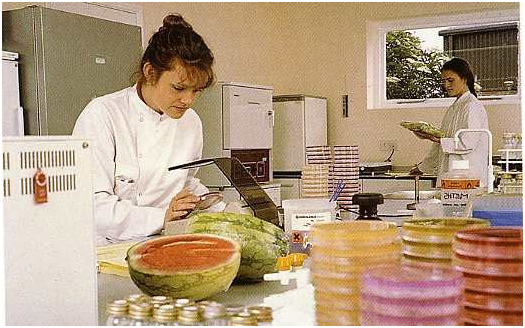Pasteurization is simply defined as the process of heating food during its production in order to destroy pathogenic microorganisms or food spoilage organisms in them. Food products or foods such as milk, yoghurt, dairy products and other liquid products are heated in this manner to destroy microorganisms that cause disease and spoilage in them. Pasteurization is the reduction of microbial growth in heat-sensitive products such as milk in order to inhibit or kill pathogenic microorganisms present in them.
This technique of reducing or killing food spoilage organisms in food was discovered and developed by Louis Pasteur in 18-19th century as a method of preserving wine during storage; and Pasteur showed that pasteurization (which is the mild heating of milk) could kill pathogenic microorganisms in broth. Pasteurization is an important technique in most industrial applications especially in food industries where it is applied to contain food spoilage in food or food products. It is usually carried out at a temperature range of between 60-80oC; and pasteurization does not last too long when applied in food production.
Generally, temperatures below 100oC are used during pasteurization of milk and other liquid food products; and the heating is usually done at various time intervals and at different temperature range. Pasteurization of food products or food is usually carried out at varying temperatures such as high-temperature short time.
High-temperature short time (HTST) is applied in both pasteurization and appertization techniques to destroy pathogenic and spoilage microorganisms present in food. HTST is defined as the heating of milk and other liquid food products at high temperatures and at varying time intervals that can range from seconds to minutes and hours in order to inhibit or kill pathogenic microorganisms and other spoilage microbes present in them. Apart from inhibiting or killing pathogenic microorganisms present in food, pasteurization technique also helps to extend the shelf-life of the food being processed.
Pasteurization technique is effective for killing milk flora as well as other disease-causing microorganisms present in the food. In general, pasteurization is a mild heating of milk and other heat-sensitive products and it is carried out at temperatures below 100oC. Pasteurization technique is effective in the killing of some food-borne pathogens including those that cause salmonellosis (Salmonella species) and even tuberculosis (Mycobacterium species). Metabolic products such as enzymes produced by food flora in food products and which stimulate food spoilage can also be inactivated and rendered ineffective during the process of pasteurization.
References
Bushell M.E (1998). Application of the principles of industrial microbiology to biotechnology (ed. Wiseman, A.) Chapman and Hall, New York.
Byong H. Lee (2015). Fundamentals of Food Biotechnology. Second edition. Wiley-Blackwell, New Jersey, United States.
Clark D.P and Pazdernik N (2010). Biotechnology. First edition. Elsevier Science and Technology Books, Amsterdam, Netherlands.
Farida A.A (2012). Dairy Microbiology. First edition. Random Publications. New Delhi, India.
Frazier W.C, Westhoff D.C and Vanitha N.M (2014). Food Microbiology. Fifth edition. McGraw-Hill Education (India) Private Limited, New Delhi, India.
Guidebook for the preparation of HACCP plans (1999). Washington, DC, United States Department of Agriculture Food Safety and Inspection Service. Accessed on 20th February, 2015 from: http://www.fsis.usda.gov
Hayes P.R, Forsythe S.J (1999). Food Hygiene, Microbiology and HACCP. 3rd edition. Elsevier Science, London.
Hussaini Anthony Makun (2013). Mycotoxin and food safety in developing countries. InTech Publishers, Rijeka, Croatia. Pp. 77-100.
Jay J.M (2005). Modern Food Microbiology. Fourth edition. Chapman and Hall Inc, New York, USA.
Lightfoot N.F and Maier E.A (1998). Microbiological Analysis of Food and Water. Guidelines for Quality Assurance. Elsevier, Amsterdam.
Nduka Okafor (2007). Modern industrial microbiology and biotechnology. First edition. Science Publishers, New Hampshire, USA.
Roberts D and Greenwood M (2003). Practical Food Microbiology. Third edition. Blackwell publishing Inc, USA.
Discover more from #1 Microbiology Resource Hub
Subscribe to get the latest posts to your email.



